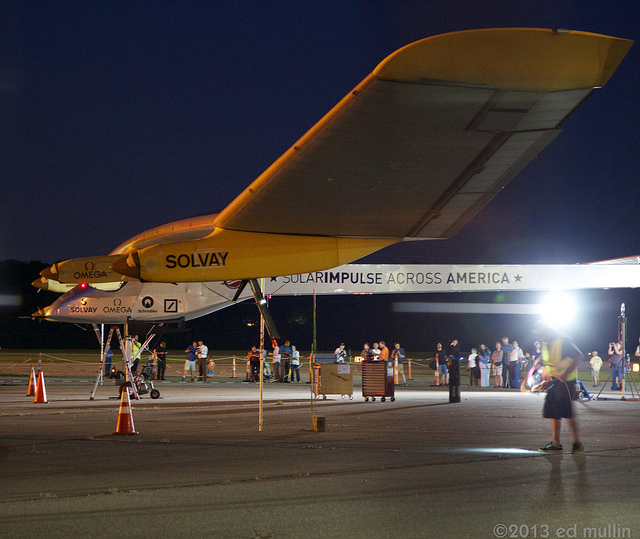The second leg of the flight of Solar Impulse 2, the first solare plane in the world, was cancelled due to unfavorable weather conditions in the Pacific Ocean.
The flight was due to leave Nagoya in central Japan to Hawaii. But the mission was cancelled in the last few hours before takeoff due to extreme weather conditions in the Pacific Ocean. According to project spokeswoman Elke Neumann, the flight was cancelled as the priority is the plane's safety and the pilot's safety. The flight’s pilot as well the CEO of the company that owns Solar Impulse, Andre Borschberg revealed that he was disappointed with the delay, yet acknowledged that it was for the right reason.
Earlier, the plane had to stop at Japan because of unfavorable weather over the Pacific Ocean while the plane was attempting to cross the ocean to Hawaii from China. Even so, Borschberg created a world record for endurance flight in a solar-powered airplane on the trip from China to Japan.
The last trip to Hawaii for the Solar Impulse World Tour is concerned extremely dangerous as there are no possible places to stop after Japan in the stretch. The flight to Hawaii would be a tiresome 115 hours on the plane.
The landmark journey by Solar Impulse 2 is aimed to promote green energy in the aviation sector and also test the endurance of its pilots. The new model flight has a wingspan of 72m, which is wider than a 747 jumbo jet. But its overall weight at only 2.3 tonnes has been critical in its success. The plane has around 17,000 solar cells that line its wings and uses lithium-ion batteries for night-time flying. The only disadvantage of the plane is its slow speed making it daunting for the pilots to cruise it day and night.
The privately-funded Swiss-based company started the construction of the second Solar Impulse aircraft in 2011. Completion was initially planned for 2013, with a 25-day circumnavigation of the globe planned for 2014. However, a structural failure of the aircraft's main spar occurred during static tests in July 2012, leading to delays in the flight testing schedule to allow for repairs.
The flight was due to leave Nagoya in central Japan to Hawaii. But the mission was cancelled in the last few hours before takeoff due to extreme weather conditions in the Pacific Ocean. According to project spokeswoman Elke Neumann, the flight was cancelled as the priority is the plane's safety and the pilot's safety. The flight’s pilot as well the CEO of the company that owns Solar Impulse, Andre Borschberg revealed that he was disappointed with the delay, yet acknowledged that it was for the right reason.
Earlier, the plane had to stop at Japan because of unfavorable weather over the Pacific Ocean while the plane was attempting to cross the ocean to Hawaii from China. Even so, Borschberg created a world record for endurance flight in a solar-powered airplane on the trip from China to Japan.
The last trip to Hawaii for the Solar Impulse World Tour is concerned extremely dangerous as there are no possible places to stop after Japan in the stretch. The flight to Hawaii would be a tiresome 115 hours on the plane.
The landmark journey by Solar Impulse 2 is aimed to promote green energy in the aviation sector and also test the endurance of its pilots. The new model flight has a wingspan of 72m, which is wider than a 747 jumbo jet. But its overall weight at only 2.3 tonnes has been critical in its success. The plane has around 17,000 solar cells that line its wings and uses lithium-ion batteries for night-time flying. The only disadvantage of the plane is its slow speed making it daunting for the pilots to cruise it day and night.
The privately-funded Swiss-based company started the construction of the second Solar Impulse aircraft in 2011. Completion was initially planned for 2013, with a 25-day circumnavigation of the globe planned for 2014. However, a structural failure of the aircraft's main spar occurred during static tests in July 2012, leading to delays in the flight testing schedule to allow for repairs.





